In today’s fast-paced world, businesses rely heavily on technology to drive growth and stay competitive. As a result, the complexity of managing enterprise IT infrastructure has increased exponentially. However, with the advent of IT automation, a powerful tool has emerged that is revolutionising the way organisations manage and streamline their IT operations. In this article, we will explore the benefits and advances of IT automation, examine how it has changed IT management, and discuss what can be expected in the coming years.
Benefits of IT Automation
Increased Efficiency: IT automation eliminates manual, repetitive tasks, freeing up valuable time for IT professionals to focus on more strategic initiatives. This leads to increased productivity and efficiency across the organisation.
Cost Savings: By automating routine tasks, businesses can reduce the costs associated with hiring and training additional staff. Moreover, automation reduces the risk of human error, which can result in costly downtime or security breaches.
Improved Accuracy: Automation ensures consistent execution of IT processes, minimising the chances of errors. This not only enhances the quality of service delivery but also improves customer satisfaction.
Faster Response Times: Automation enables proactive monitoring and rapid incident response. It can identify and rectify issues before they impact end-users, leading to faster problem resolution and reduced downtime.
Enhanced Scalability: With automation, businesses can scale their IT operations seamlessly as the demand for services grows. Automated provisioning and configuration management enable rapid deployment of new resources, ensuring agility in a dynamic business environment.
Watch our Director of Client Solutions Designs, Stuart Surridge, share his views on Automation.
Advances in IT Automation
Artificial Intelligence and Machine Learning: Advancements in AI and ML technologies have significantly enhanced IT automation capabilities. Intelligent automation systems can now learn from past incidents, predict potential issues, and proactively take corrective actions.
Self-Healing Systems: Automation is empowering IT systems to self-diagnose, self-configure, and even self-heal. This reduces the need for manual intervention and allows systems to recover quickly from failures, ensuring maximum availability.
Integration with DevOps Practices: IT automation is tightly integrated with DevOps practices, facilitating continuous integration, deployment, and delivery. This collaboration enables IT teams to deliver software updates faster and more reliably.
Changing the Face of IT Management
IT automation has revolutionised traditional IT management practices in several ways:
Reduced Manual Intervention: Repetitive tasks that were once performed manually can now be automated, reducing human dependency and enabling IT teams to focus on high-value work.
Streamlined IT Processes: Automation fosters standardisation and consistency in IT processes, enabling organisations to achieve operational excellence. It helps create repeatable workflows, reducing variations and ensuring compliance.
Improved Security and Compliance: Automation eliminates human error in security and compliance-related tasks. By enforcing standardised policies and automating vulnerability management, organisations can enhance their overall security posture.
Enhanced Visibility and Reporting: Automation provides real-time insights into IT operations, enabling IT teams to identify trends, monitor performance, and generate comprehensive reports. This data-driven approach enhances decision-making and optimises resource allocation.
So what is the future?
Looking ahead, we can expect several exciting developments in the field of IT automation:
Hyperautomation: The convergence of AI, ML, and automation will enable hyperautomation, where complex end-to-end business processes can be automated seamlessly, resulting in further efficiency gains.
Advanced Orchestration: Automation will evolve to encompass end-to-end IT service management and orchestration across multiple platforms, enabling a unified and integrated approach to IT operations.
Robotic Process Automation: RPA will play a crucial role in automating manual, repetitive tasks across various applications, enhancing productivity, and accelerating digital transformation efforts.
Data-Driven Automation: Automation will increasingly leverage data analytics and AI to make intelligent decisions, predict and prevent failures, and optimize resource allocation in real-time.
Is IT Automation going to work for my organisation?
IT automation has emerged as a game-changer in the Enterprise IT landscape. Its benefits, advances, and transformative effect on IT management are clear. Businesses that embrace automation will not only gain an edge over their competitors but also unlock the potential for innovation. As we move forward, the future of IT automation holds immense promise, revolutionising the way organizations operate, grow, and deliver value to their customers.
We recommend looking into small automation projects for a start, and once the benefits become apparent, move onto larger scale projects.




